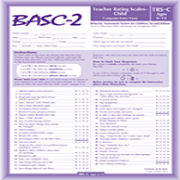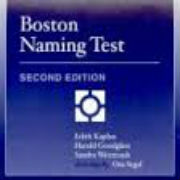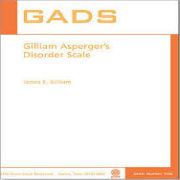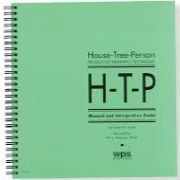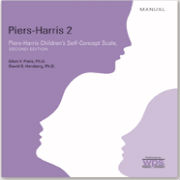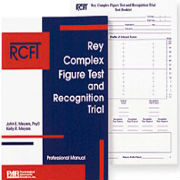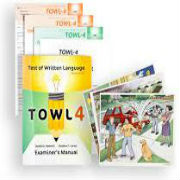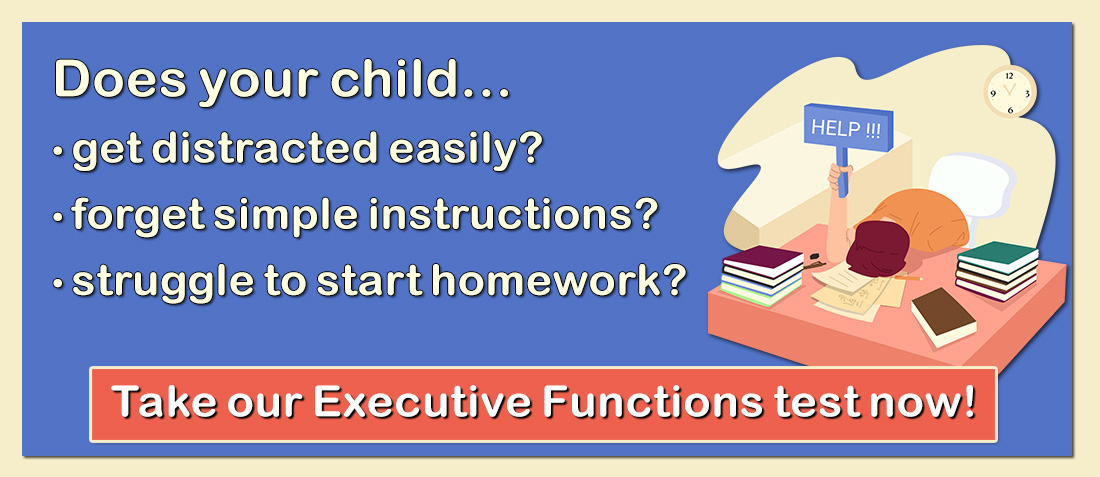Test and Evaluation Glossary
A compilation of the types of evaluations and tests that South County Child and Family Consultants uses to assess their patient and what each test is designed to target.
Adaptive Behavior Assessment System-II (ABAS-II): The ABAS-II provides a complete assessment of adaptive skills of individuals from birth to 89 years of age. It uses a behavior rating scale typically completed by parent, caregiver, and/or teacher; however, there is also a self-rating option for adults. This system provides the clinician with information on a client’s ability to function in areas such as social skills, leisure skills, communication skills, self-care, health and safety, and work. These domains encompass practical, everyday skills required to function, meet environmental demands, care for oneself, and interact with others effectively and independently. On a 4-point response scale, raters indicate whether, and how frequently, the individual performs each activity.
 Autism Spectrum Rating Scale (ASRS): The ASRS was designed to effectively identify symptoms, behaviors, and associated features of Autism Spectrum Disorders (ASDs) in children and adolescents ages 2 through 18. Using a five-point Likert rating scale, parents and teachers are asked to evaluate how often they observed specific behaviors in the child or adolescent in areas such as socialization, communication, unusual behaviors, behavioral rigidity, sensory sensitivity, and self-regulation. When completed, this scale can provide the clinician with insight as to a client’s likelihood of exhibiting an ASD or ASD symptoms.
Autism Spectrum Rating Scale (ASRS): The ASRS was designed to effectively identify symptoms, behaviors, and associated features of Autism Spectrum Disorders (ASDs) in children and adolescents ages 2 through 18. Using a five-point Likert rating scale, parents and teachers are asked to evaluate how often they observed specific behaviors in the child or adolescent in areas such as socialization, communication, unusual behaviors, behavioral rigidity, sensory sensitivity, and self-regulation. When completed, this scale can provide the clinician with insight as to a client’s likelihood of exhibiting an ASD or ASD symptoms.
Automated Test of Working Memory Assessment (AWMA): The AWMA is a computer-based assessment of working memory skills. It provides a means for the clinician to screen for significant working memory problems from childhood through young adulthood (ages 4 to 22). Working memory abilities are closely related to a variety of academic abilities, and therefore early screening and identification can be beneficial in providing a client with appropriate interventions.
BarOn Emotional Quotient Inventory: Youth Version (BarOn EQ-i:YV): This inventory is an easily-administered self-report instrument designed to measure emotional intelligence in children and adolescents, ages 7 to 18. It consists of 60 items that cover seven scales of emotional intelligence. It can be a useful tool to the clinician in providing emotional and social information about an individual.
Beck Depression Inventory (BDI): The BDI is a 21-question multiple-choice, self-report inventory used to measure the severity of depression. The inventory is designed for use in individuals ages 13 and over and is composed of items related to symptoms of depression, such as hopelessness and irritability, cognitions of guilt or punishment, and physical symptoms like fatigue and weight loss. It can be used as a tool by the clinician in the diagnosis of depression.
Beck Hopelessness Scale (BHS): The BHS is a 20-question self-report inventory designed to measure the three major aspects of hopelessness: feelings about the future, loss of motivation, and expectations. The test is designed for older adolescents and adults, ages 17 to 80, and is often used in tandem with other measures to diagnose depression.
Beck Youth Inventories (BYI): The BYI is used to evaluate children’s and adolescent’s (ages 7 to 18) emotional and social impairment. Five self-report inventories can be used separately or in combination to assess symptoms of depression, anxiety, anger, disruptive behavior, and self-concept. Each inventory contains 20 statements about thoughts, feelings, and behaviors associated with emotional and social impairment in youth. Children and adolescents describe how frequently the statement has been true for them.
Beery VMI: The Beery VMI helps to assess the extent to which individuals can integrate their visual and motor abilities. It is appropriate for use in children and adults (ages 2 to 100) and presents several drawings of geometric forms in order of increasing difficulty, for the client to copy. It is primarily used by the clinician to identify individuals who may be encountering difficulties in visual-motor integration, which can lead to learning, neuropsychological, and behavioral problems.
Behavior Assessment System for Children (BASC-II): The BASC-II is a comprehensive set of rating scales and forms including the Teacher Rating Scales (TRS), Parent Rating Scales (PRS), Self-Report of Personality (SRP), Student Observation System (SOS), and Structured Developmental History (SDH). Teachers, parents, and sometimes the students themselves rate a variety of behaviors and emotions experienced during a typical day. Together, these scales and forms help the clinician understand the behaviors and emotions of children and young adults, ages 2 through college age.
Behavior Rating Inventory of Executive Functioning Self Report (BRIEF): The BRIEF seeks to assess an adolescent’s (ages 11 to 18) view of his/her cognitive, emotional, and behavioral functions. It is an 80-item self-report behavior rating scale that can serve as an important tool in the clinical evaluation and treatment of children and adolescents who have demonstrated problems involving the executive control functions.
Bender Visual-Motor Gestalt Test-II: The Bender-II is a test used to evaluate visual-motor maturity and is appropriate for use with individuals ages 4 through 85. The test consists of 16 figures, each on its own 3 x 5 card, with the participant shown each figure and asked to copy it onto a piece of blank paper. The test can provide the clinician with interpretive information about an individual’s development, neuropsychological functioning, and maturation level of visuomotor perceptions.
Boston Naming Test (BNT): The BNT is a naming vocabulary test consisting of 60 pictures which helps to determine the extent of an individual’s visual confrontation naming abilities. The individual is presented with a picture of an item and asked to identify it. This test can assist the clinician in assessing expressive language skills.
Brief Academic Skills Survey (BASS): This measure of a child’s academic skills was developed at South County Child & Family Consultants as part of an ongoing research project. The BASS is a 36-item, parent-completed questionnaire about his/her child’s performance in reading, writing, and mathematics. It measures a parent’s observation of his/her child’s academic skills in areas such as reading fluency and comprehension, written expression, organization, and conceptual mathematics and computation. There are two versions of the BASS; grades K-2 and grades 3-6.
 Brown ADD Scales: These scales are two 40-item self-report scales that measure symptoms of attention-deficit disorders. One of these scales, the Brown ADD Scale for Adolescents, has been designed and tested for use with students 12 to 18 years old. The second scale, the Brown ADD Scale for Adults, has been designed and tested for use with adults 18 years and older. These scales can assist the clinician in screening persons suspected of having an attentional disorder.
Brown ADD Scales: These scales are two 40-item self-report scales that measure symptoms of attention-deficit disorders. One of these scales, the Brown ADD Scale for Adolescents, has been designed and tested for use with students 12 to 18 years old. The second scale, the Brown ADD Scale for Adults, has been designed and tested for use with adults 18 years and older. These scales can assist the clinician in screening persons suspected of having an attentional disorder.
Comprehensive Executive Function Inventory (CEFI): The CEFI comes in both a self-response form and a response form for teachers. The form for teachers can be filled out for children between the ages of 5 and 18, and the self-response form can be filled out by children ages 12-18. The CEFI is designed to measure a wide spectrum of behaviors associated with executive functioning. The test uses standard scores to compare the youth to a nationally representative norm group. This information can be used to guide assessment, diagnosis, and treatment planning.
Child Sensory Profile 2: The Child Sensory Profile 2 is a group of assessments that are designed to evaluate a child’s sensory processing patterns. These forms are to be filled out by teachers and parents/guardians. The tests are appropriate for children ages 3 to 14:11 years.
Children’s Depression Form: This is a checklist of common symptoms of depression that are observed in children. Two versions are available: one for children, ages 8 and older; and one for parents.
Children’s Depression Inventory (CDI): The CDI measures cognitive, affective, and behavioral signs of depression and is appropriate for use with individuals ages 7 to 17. It is a self-report, multiple-choice inventory that consists of 27 items. The child marks the choice that best describes his/her feelings or behaviors over the past 2 weeks. There are also parent and teacher test forms which provide additional perspectives on childhood depression. The CDI is useful for the clinician in identifying students with depression or depressive symptoms.
College ADHD Response Evaluation (CARE): The CARE is designed to assess ADHD symptoms in young adults ages 17 to 23. The CARE will establish the need for a more comprehensive psychological evaluation for those students who are concerned that symptoms of ADHD may be impacting their achievement. The instrument can also assist postsecondary disability service providers with students who have a documented history of ADHD. The CARE consists of two rating scales: the Student Response Inventory (SRI), which is administered to college students; and the Parent Response Inventory (PRI), which is administered to students’ parents.
Comprehensive Test of Phonological Processing (CTOPP): There are two versions of this test, one for children ages 5 to 6, and another for children and young adults ages 7 to 24. The assessment involves testing the client’s phonological awareness, memory, and rapid naming skills. Individuals with deficits in one or more of these phonological processing abilities may have difficulty in learning to read. Therefore, the CTOPP was developed to aid the clinician in the identification of individuals who might benefit from instructional activities to enhance their phonological skills.
Conners’ Continuous Performance Test (CPT-II): The CPT-II is an attention test that is widely used by clinicians who are seeking to identify ADHD and other attentional concerns in clients ages 6 and older. Response patterns on the CPT-II provide information that enables the practitioner to better understand the type of deficits that might be present. For example, some response patterns suggest inattentiveness or impulsivity, while other response patterns may indicate activation/arousal problems or difficulties maintaining vigilance.
Delis-Kaplan Executive Function System (D-KEFS): The D-KEFS provides a comprehensive assessment of the key components of executive functioning, specifically higher-level thinking and cognitive flexibility. In addition, it assesses vital executive functions such as flexibility of thinking, inhibition, problem solving, planning, impulse control, and creativity. It is appropriate for use in individuals from ages 8 through 90 and can be used by the clinician to assess how an individual’s frontal system of the brain is functioning, determine deficits in abstract thinking, and plan appropriate strategies and interventions.
Denckla Cancellation Test: The Denckla requires the client to recognize a target number or shape in an array of numbers or shapes. The clinician asks the client to cross out every item which matches the noted stimulus item. The clinician can subsequently use the time and accuracy of the client’s performance to assist in a diagnosis.
Differential Abilities Scale-II (DAS-II): The DAS-II is a battery of cognitive and achievement tests. It is appropriate for children ages 2 years 6 months through 17 years 11 months. The diagnostic subtests measure a variety of cognitive abilities, which include: verbal and visual working memory, immediate and delayed recall, visual recognition and matching, processing and naming speed, understanding of basic number concepts, and phonological processing. The clinician can subsequently use the results of these tests to aid in a diagnosis.
Disruptive Behavior Rating Scale – Parent and Teacher Form: The Disruptive Behavior Rating Scale comes in three multiple-choice rating form versions: Mother Version, Father Version, and Teacher Version. The scale seeks to identify common behavior problems such as attention deficit disorder, attention deficit disorder with hyperactivity, oppositional disorders, and antisocial conduct problems in school children ages 5 to 10.
Draw a Person: Screen Procedure for Emotional Disturbance (DAP:SPED): In this test, children and adolescents (ages 6 to 17) are asked to draw human figures given the categories of man, woman, and self. Clinicians can use this non-verbal and non-threatening exercise in order to assist them in identifying emotional or behavioral disorders in children.
Executive Skills Questionnaire for Parents (ESQ): This measure of executive functioning was developed at South County Child & Family Consultants as part of an ongoing research project. The ESQ is a 60-item questionnaire assessing 12 executive skills. It is particularly helpful in understanding skills such as planning, organization, time management, and working memory.
Executive Skills Questionnaire for Teachers (ESQ): This measure of executive functioning was developed at South County Child & Family Consultants as part of an ongoing research project. The ESQ is a 60-item questionnaire assessing 12 executive skills. It is particularly helpful in understanding skills such as planning, organization, time management, and working memory.
Executive Skills Survey for Adolescents and Youth (ESSAY): This measure of executive functioning was developed at South County Child & Family Consultants as part of an ongoing research project. This is a self-report measure for children that assesses executive functions. The measure assesses a child’s view of his/her own executive functions and can be very helpful in targeting educational interventions in areas that the child is acknowledging having academic difficulties.
General Behavior Inventory (GBI): This is a brief screening inventory that helps in assessing the prevalence of bipolar disorders in children. This self-report measure can assist the clinician in identifying bipolar symptoms in clients.
Gilliam Asperger’s Disorder Scale (GADS): The GADS is an assessment designed to evaluate individuals with unique behavior problems who may have Asperger’s Disorder. It is appropriate for use in individuals ages 3 to 22 and provides documentation about the essential behavior characteristics of Asperger’s Disorder necessary for diagnosis. The 32 items target behaviors on the subscales of social interaction, restricted patterns of behavior, cognitive patterns, and pragmatic skills. The GADS can be helpful in the initial diagnosis of Asperger’s Disorder, as well as in monitoring the effectiveness of special intervention programs.
Gilliam Autism Rating Scale-II (GARS-II): The GARS-II is an instrument used to identify and diagnose autism in individuals ages 3 to 22, as well as to estimate the severity of the disorder. It uses objective, frequency-based ratings, which seek to incorporate the characteristic behaviors of individuals with autism, specifically stereotyped behaviors, communication, and social interaction.
Gray Oral Reading Tests- Fifth Edition, Complete Kit (GORT-5): The GORT 5 is used to measure oral reading fluency and comprehension has two equivalent forms. The forms both contain 16 developmentally sequenced reading passages and five comprehension questions. The GORT 5 is appropriate for children ages 6 to 23:11.
Greenspan Social-Emotional Growth Chart: This test is a screening tool used to measure social-emotional milestones in young children ages 0 to 42 months. It can be beneficial to the clinician to use this tool because early identification of social-emotional deficits and compromises can lead to more successful interventions.
Hopelessness Scale for Children (HSC): The HSC is a 17-item modification of the Beck Hopelessness Scale. Clients are asked to rate items as either true or false, and higher scores are indicative of a greater degree of hopelessness. Clinicians can use this scale to assist in the diagnosis of depression or screening of suicidal thoughts in children.
House-Tree-Person Test: This projective technique asks the client to draw (1) a house, (2) a tree, and (3) a person, each on white paper. These figures are thought to provide the clinician with some indication of how the child perceives him or herself in the world and often used in tandem with other assessments.
Incomplete Sentences Form: The Incomplete Sentences Form asks the client to complete the rest of a provided sentence stem, either verbally or in written form. The initial sentence stems are typically short, such as “I regret…”, and the client’s unique responses can provide the clinician with some insight into his/her thought patterns, while also helping to better paint a picture of the client as an individual.
Kaufman Assessment Battery for Children (K-ABC): The K-ABC is a test which assesses intelligence and achievement in children ages 2 years 6 months through 12 years 6 months. The Kaufman Assessment Battery for Children was specifically developed for three groups: children of preschool age, children with learning disabilities, and children who belong to minority groups. The results of this assessment instrument can help to plan educational placement and accommodations for a student, as well as to assist in a diagnosis.
Kaufman Brief Intelligence Test (K-BIT-II): The K-BIT-II offers a quick and thorough estimate of verbal and nonverbal intelligence in individuals ages 4 to 90. It has a Verbal scale which assesses crystallized ability (knowledge of words and meanings), while the Nonverbal Scale assesses fluid thinking, and the ability to solve new problems by perceiving relationships and completing analogies.
Kiddie-Butler-Bradley Obsessive Compulsive Scale (Kiddie B-BOCS): The Kiddie B-BOCS is a parent report form which seeks to identify symptoms of obsessive-compulsive disorder in children. The parent is asked to complete the 29-item report form, noting behaviors that his/her child has exhibited over the past six months. This scale can assist the clinician in identifying children with obsessive-compulsive disorder.
Kinetic Drawing System for Family and School: This technique allows the clinician to assess a child’s perceptions of important relationships and dynamics at home and in school. The child is asked to draw pictures showing interactions between people at home and in school, and is then asked to explain each drawing. An emphasis is placed on how the child perceives his or her interactions with others and this exercise can provide insight into the child’s feelings and functioning in a non-threatening manner. The Kinetic Drawing System for Family and School can be an especially helpful approach for younger children who may lack proficient verbal expression skills.
Mood and Feelings Questionnaire (MFQ): This test is designed to assess how adolescents ages 13 to 18 have been feeling or acting recently. There is one version for students in which they are asked to answer questions about their own feelings and behavior, and a second version for parents in which they answer questions about their child. This test can help identify specific symptoms that may be affecting the client, which, in turn, can help clinicians in accurately diagnosing clients.
Minnesota Multiphasic Personality Inventory (MMPI-2, MMPI-A): The MMPI is the most widely-used personality inventory in the world and has versions appropriate for both adults and adolescents. The adolescent version consists of 487 true-false items and it is an invaluable instrument that provides normative information about adolescents’ levels of depression, anxiety, substance use, and other psychiatric disorders.
Mullen Scales of Early Learning: This test is used to assess early intellectual development and school readiness. Infants and children ages birth to 5 years 8 months can be given this test which assesses gross-motor, visual reception, fine-motor, expressive language, and receptive language skills. Strengths and weaknesses shown on this test can aid the clinician in designing and recommending the most adequate teaching strategies for the child.
Multidimensional Anxiety Scale for Children (MASC 2): This is a 50-item self-report test is designed to assess anxiety symptoms across clinically significant symptom domains. It can be given to children ages 8 through 19 years, and consists of questions related to different areas of life.
Multidimensional Anxiety Scale for Children (MASC 2): This is a 50-item parent questionnaire is designed to assess anxiety symptoms across clinically significant symptom domains. It can be given to parents of children ages 8 through 19 years, and consists of questions related to different areas of life.
Multiple Intelligence Questionnaire: This measure of multiple intelligence was developed at South County Child & Family Consultants as part of an ongoing research project. It is based upon Howard Gardner’s work on multiple intelligence and is designed to assess a child’s skills in areas such as musical, interpersonal, kinesthetic, and naturalistic intelligences. It measures skills beyond traditional conceptualizations of intelligence that focus on verbal, mathematical, and logical skills.
 Nelson-Denny Reading Test: This test is designed for high school students, college students, and adults. It measures vocabulary development, comprehension, and reading rate. It provides measures of independent reading levels, instructional reading levels, frustration levels, listening comprehension levels, word recognition miscue analysis, and comprehension question analysis. The primary use of the Nelson-Denny is as a screening test for reading problems, as a predictor of academic success, and as a measure of progress resulting from educational interventions.
Nelson-Denny Reading Test: This test is designed for high school students, college students, and adults. It measures vocabulary development, comprehension, and reading rate. It provides measures of independent reading levels, instructional reading levels, frustration levels, listening comprehension levels, word recognition miscue analysis, and comprehension question analysis. The primary use of the Nelson-Denny is as a screening test for reading problems, as a predictor of academic success, and as a measure of progress resulting from educational interventions.
 NEPSY-II: This test is used to evaluate children’s ability and performance in their executive function and attention, language, memory and learning, sensorimotor, visuospatial processing, and social perception. It is appropriate for use in children from preschool age through age 16. It allows the clinician to create a tailored assessment across six domains, specific to a child’s situation in order to answer referral questions or diagnostic concerns. The results provide information relating to typical childhood disorders, which can lead to accurate diagnosis and intervention planning for success in school and at home.
NEPSY-II: This test is used to evaluate children’s ability and performance in their executive function and attention, language, memory and learning, sensorimotor, visuospatial processing, and social perception. It is appropriate for use in children from preschool age through age 16. It allows the clinician to create a tailored assessment across six domains, specific to a child’s situation in order to answer referral questions or diagnostic concerns. The results provide information relating to typical childhood disorders, which can lead to accurate diagnosis and intervention planning for success in school and at home.
Nonverbal Learning Disabilities Questionnaire: This is a brief screening measure adapted from David Goldstein, PhD (1999). It measures a parent’s observations of the motor, visual-spatial, and interpersonal difficulties that characterize children with nonverbal learning disabilities.
Peabody Picture Vocabulary Test (PPVT-III): This test is used as a measure of receptive vocabulary for standard English, in addition to acting as a screening test of verbal ability. The test involves the examiner saying a word, presenting a series of pictures to the client, and then asking the client to point to the picture that the word describes. This test can be given to clients ages 2 years 6 months through 90, and provides a quick estimate of their verbal ability or scholastic aptitude.
Penn State Worry Questionnaire for Children: This test was designed to be used with children between the ages of 8 and 12 years old. It is a 14-question self-report questionnaire that measures the tendency of a child to engage in excessive and uncontrollable worrying. This test can help clinicians in diagnosing children with a variety of anxiety disorders.
Piers-Harris Children’s Self-Concept Scale-II: This measure provides the clinician with a well-rounded picture of a child’s self-concept by asking the child (ages 7 to 18) questions in a paper-based yes/no format. These questions are related to the child’s perception of his/her physical appearance, attributions, freedom from anxiety, intellectual and school status, behavioral adjustment, happiness and satisfaction, and popularity. The Piers Harris Children’s Self-Concept Scale will often aid the clinician in identifying specific areas of conflict, typical coping and defense mechanisms, and appropriate intervention techniques for a particular child.
 Processes Assessment of the Learner-II (PAL-II): The PAL-II is a comprehensive, evidence-based assessment-intervention system in reading, writing, and math. It is appropriate for children in grades K-6 and uses a three-tiered approach. The prevention tier (Tier 1) provides evidence-based class-wide and school-wide screening and intervention for students at-risk for reading, writing, and math difficulties; the early intervention lessons have been demonstrated to prevent reading, writing, and math problems in many students in grades K-4. The problem-solving tier (Tier 2) provides an evidence-based approach to problem-solving consultation in which a small set of research-validated diagnostic measures is selected based on reason for referral; results are used in planning modification of the instructional program and in progress monitoring in grades K-6. Finally, the diagnostic tier (Tier 3) provides evidence-based diagnostics for dysgraphia, dyslexia, OWL LD, and dyscalculia that are linked to evidence-based treatment for these biologically based learning disabilities.
Processes Assessment of the Learner-II (PAL-II): The PAL-II is a comprehensive, evidence-based assessment-intervention system in reading, writing, and math. It is appropriate for children in grades K-6 and uses a three-tiered approach. The prevention tier (Tier 1) provides evidence-based class-wide and school-wide screening and intervention for students at-risk for reading, writing, and math difficulties; the early intervention lessons have been demonstrated to prevent reading, writing, and math problems in many students in grades K-4. The problem-solving tier (Tier 2) provides an evidence-based approach to problem-solving consultation in which a small set of research-validated diagnostic measures is selected based on reason for referral; results are used in planning modification of the instructional program and in progress monitoring in grades K-6. Finally, the diagnostic tier (Tier 3) provides evidence-based diagnostics for dysgraphia, dyslexia, OWL LD, and dyscalculia that are linked to evidence-based treatment for these biologically based learning disabilities.
Processing Speed Questionnaire: This measure of processing speed was developed at South County Child & Family Consultants as part of an ongoing research project. This measure is a parent’s observation of a child’s ability to process information efficiently while writing, at school, or in conversation with others. It can be very helpful in understanding children who are falling behind in school or do not appear to be reaching their academic potential.
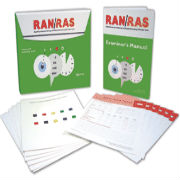 Rapid Automatized Naming and Rapid Alternating Stimulus Test (RAN/RAS): The RAN/RAS tests seek to estimate an individual’s ability to recognize a visual symbol, such as a letter or color, and then name it accurately and rapidly. The tests consist of rapid automatized naming tests (letters, numbers, colors, objects) and two rapid alternating stimulus tests. These tests are appropriate for individuals ages 5 through adulthood and based on the amount of time required to accurately name the stimulus items on each test, the clinician can gain insightful information on an individual’s abilities in these areas.
Rapid Automatized Naming and Rapid Alternating Stimulus Test (RAN/RAS): The RAN/RAS tests seek to estimate an individual’s ability to recognize a visual symbol, such as a letter or color, and then name it accurately and rapidly. The tests consist of rapid automatized naming tests (letters, numbers, colors, objects) and two rapid alternating stimulus tests. These tests are appropriate for individuals ages 5 through adulthood and based on the amount of time required to accurately name the stimulus items on each test, the clinician can gain insightful information on an individual’s abilities in these areas.
 Resiliency Scales for Children and Adolescents (RSCA): The Resiliency Scales for Children and Adolescents (RSCA) are three scales for assessing the relative strength of three aspects of personal resiliency as a profile in children and adolescents. It is appropriate for use in individuals ages 9 to 18 and can be beneficial to the clinician in garnering a full picture of the client, as well as specific information on their unique resiliency capabilities. The scales tap into factors such as optimism, adaptivity, trust, tolerance, comfort, and sensitivity.
Resiliency Scales for Children and Adolescents (RSCA): The Resiliency Scales for Children and Adolescents (RSCA) are three scales for assessing the relative strength of three aspects of personal resiliency as a profile in children and adolescents. It is appropriate for use in individuals ages 9 to 18 and can be beneficial to the clinician in garnering a full picture of the client, as well as specific information on their unique resiliency capabilities. The scales tap into factors such as optimism, adaptivity, trust, tolerance, comfort, and sensitivity.
 Revised Children’s Manifest Anxiety Scale-II (RCMAS-II): This self-report measure attempts to ascertain the level and nature of anxiety being experienced by a child or adolescent (ages 6 to 19). The RCMAS employs a paper-based yes/no format which asks the child questions dealing with worry/oversensitivity, social concerns/concentration, and physiological anxiety. Since anxiety is identified as a likely indicator of stress, this test can aid clinicians in better helping a child to cope with stressful situations in his/her daily life.
Revised Children’s Manifest Anxiety Scale-II (RCMAS-II): This self-report measure attempts to ascertain the level and nature of anxiety being experienced by a child or adolescent (ages 6 to 19). The RCMAS employs a paper-based yes/no format which asks the child questions dealing with worry/oversensitivity, social concerns/concentration, and physiological anxiety. Since anxiety is identified as a likely indicator of stress, this test can aid clinicians in better helping a child to cope with stressful situations in his/her daily life.
Rey Auditory and Verbal Learning Test (RAVLT): This is a test which is used to evaluate verbal learning and memory skills, including inhibition, retention, organization, encoding, and retrieval. The test can be given to children and adults ages 7 to 89, and involves the examiner reading off a list of words, followed by the client repeating those words to the best of their ability. This procedure is carried out a total of five times.
Rey Complex Figure Test and Recognition Trial (RCFT): This test is designed to assess the client’s ability to use cues in order to retrieve information. It can be given to patients ages 6 and up, and takes approximately 45 minutes to administer. This test is useful in measuring visuo-spatial ability and memory in a client.
Roberts-II: The Roberts-II is the popular revision of the Roberts Apperception Test for Children. This storytelling measure provides an indication of a child’s social understanding as expressed in free narrative form, as the child is asked to tell a story in response to each picture that they are shown. The Roberts-II provides useful descriptive information, such as providing the clinician with insight as to how well the child reads social cues, recognizes and solves interpersonal problems, copes with difficulties, and makes use of social and emotional resources.
Rorschach Inkblot Test: This is a projective test in which clients are shown images of various inkblots, to which they are asked to express what they think the picture they are being shown looks like. This test is used as an aid in examining an individual’s personality characteristics and emotional functioning.
Screen for Child Anxiety Related Disorders (SCARED): This test is a self-report questionnaire designed to measure anxiety symptoms in children. This test can be used to diagnose anxiety, as well as to monitor anxiety over time. There are two versions, one for the child to fill out about his/her experiences, and one for the parent to fill out about how they view their child’s experiences.
Short Sensory Profile: This is a caregiver questionnaire which measures children’s responses to sensory events in everyday life. It is appropriate for children 3 to 10 years of age. Caregivers complete the questionnaire by reporting how frequently their children respond in the way described by each item. The Sensory Profile contains sections corresponding to each sensory system, sections which indicate the modulation of sensory input across sensory systems, and sections which indicate behavioral and emotional responses that are associated with sensory processing. The clinician can use such information when diagnosing a child for a number of disabilities which correlate with sensory difficulties.
 Social Responsiveness Scale (SRS): This 65-item rating scale measures the severity of autism spectrum symptoms as they occur in natural social settings. This scale can be completed by a parent or teacher and provides a clear picture of a child’s social impairments, assessing social awareness, social information processing, capacity for reciprocal social communication, social anxiety/avoidance, and autistic preoccupations and traits. It is appropriate for use with children from 4 to 18 years of age.
Social Responsiveness Scale (SRS): This 65-item rating scale measures the severity of autism spectrum symptoms as they occur in natural social settings. This scale can be completed by a parent or teacher and provides a clear picture of a child’s social impairments, assessing social awareness, social information processing, capacity for reciprocal social communication, social anxiety/avoidance, and autistic preoccupations and traits. It is appropriate for use with children from 4 to 18 years of age.Social Skills Rating System (SSRS): The SSRS is a norm-referenced instrument which provides a comprehensive picture of a client’s (ages 3 to 18) social behaviors in reference to typically-developing students. The rating scale allows teachers, parents, and the clients themselves to rate the occurrence and importance of specific social skills, problem behaviors, and academic competence (where appropriate). This multi-rater instrument allows the clinician to better understand a particular client’s social skills functioning.

Spence Children’s Anxiety Scale: This self-report test is designed to assess children’s anxiety, as it assesses a wide range of anxiety symptoms, which include: panic/agoraphobia, social anxiety, separation anxiety, generalized anxiety, obsessions/compulsions, and fear of physical injury. This test contains 45 items and helps in diagnostics of child anxiety disorders.

State Trait Anxiety Scale for Children (STAIC): This test is designed to measure anxiety in elementary or junior high school-aged children. The test is self-report and measures both state and trait anxiety. The test consists of two 20-item scales, and is helpful in allowing the clinician to differentiate between anxiety rooted in personality and anxiety as a fleeting emotional state.
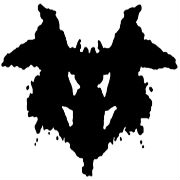
Stroop Test: The Stroop test is a psychological test of one’s mental or attentional vitality and flexibility. The test taps into an individual’s ability to read words more quickly and automatically than naming colors. For example, if a word is printed in a color differently from the color it actually names, one may struggle. If the word green is written in blue ink, one will oftentimes say green more readily than naming the color in which it is displayed (blue). The cognitive mechanism involved in this task is called directed attention, and this test allows the clinician to examine an individual’s ability to inhibit one response in order to say or do something else.
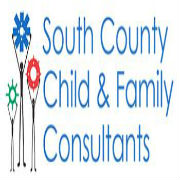
Temperament Assessments Battery for Children (TABC): This test is designed for children ages 3 to 7. There are three different forms to be filled out by the child, the parent, and the child’s teacher. The test is designed to measure the basic personality-behavioral dimensions of the child.

Test of Memory and Learning (TOMAL-2): This test is an assessment of memory for clients ages 5 to 60 years old. It uses questions that assess both verbal and nonverbal memory skills. This test is useful in helping to identify memory strengths and weaknesses, as well as potentially pathologic indicators of memory disturbances.
Test of Written Language-III (TOWL-III): This test is designed to assess the important aspects of written language in children and adolescents (ages 9 to 17) in order to aid the clinician in identifying possible interventions to aid the student. The test is used to identify students who write poorly, to determine students’ strengths and weaknesses in writing abilities, to document students’ progress in writing programs, and to measure writing in research.
Test of Word Reading Efficiency (TOWRE): The TOWRE measures an individual’s ability to pronounce printed words accurately and fluently. It allows the clinician to assess skills critical to overall reading proficiency, specifically the ability to sound out words quickly and accurately and the ability to recognize familiar words as whole units. It is appropriate for individuals ages 6 to 24 and can be helpful in identifying reading difficulties and weaknesses.

Thematic Apperception Test (TAT): In this test, clients are shown 31 pictures of human figures in a variety of settings and situations about which they are asked to make up stories. There are specific subsets of the test for men, women, boys, and girls. This test can help to reveal the client’s motivations, emotions, and conflicts, as well as assisting the clinician in diagnosing, therapy, and research.

Trail Making Test: This test is a neuropsychological test of visual attention and task switching designed for all ages. It requires the client to ‘connect-the-dots’ of consecutive targets, either numbers or numbers and letters, on a sheet of paper, as quickly as possible. The strategy and time of the client can help to inform the clinician about the client’s attentional and task switching skills.
Vineland Adaptive Behavior Scales/Vineland Social Maturity Scale: This test is designed for patients aging up to early adulthood, and measures adaptive behavior and personal and social sufficiency. This test is administered to caregivers of the patient in a semi-interview style format. This test is useful in preparing individual education plans, as well as treatment options for patients.
Wechsler Adult Intelligence Scale (WAIS-IV): This test is designed to measure the cognitive abilities of adults, ages 16 to 89 years. The test takes approximately 60-90 minutes to administer, and assesses visual comprehension, perceptual organization, working memory, and processing speed. The client is asked to respond to various stimuli presented by the examiner, which may include creating prompted designs with blocks, recalling letter and number combinations, and comprehending and expressing vocabulary words.
 Wechsler Individual Achievement Test-II (WIAT-III): This is a test used to assess an individual’s achievement skills and problem solving ability, and can be administered to clients ages 4 to 85. This test has sections assessing oral expression, listening comprehension, written expression, spelling, word reading, pseudoword decoding, reading comprehension, numerical operations, and math reasoning. This test is useful in planning a child’s individual education plan, in recognizing at-risk students in order to develop on-target interventions, and in identifying individual strengths and weaknesses.
Wechsler Individual Achievement Test-II (WIAT-III): This is a test used to assess an individual’s achievement skills and problem solving ability, and can be administered to clients ages 4 to 85. This test has sections assessing oral expression, listening comprehension, written expression, spelling, word reading, pseudoword decoding, reading comprehension, numerical operations, and math reasoning. This test is useful in planning a child’s individual education plan, in recognizing at-risk students in order to develop on-target interventions, and in identifying individual strengths and weaknesses.
 Wechsler Intelligence Scale for Children (WISC-IV): This test assesses verbal comprehension, perceptual reasoning, working memory, and processing speed in children ages 6 to 16. It is used to determine the client’s cognitive strengths and weaknesses, in addition to being used in the assessment of learning disabilities, executive functions, attention deficit disorder, and traumatic brain injuries. The client is asked to respond to various stimuli presented by the examiner, which may include creating prompted designs with blocks, recalling letter and number combinations, and comprehending and expressing vocabulary words.
Wechsler Intelligence Scale for Children (WISC-IV): This test assesses verbal comprehension, perceptual reasoning, working memory, and processing speed in children ages 6 to 16. It is used to determine the client’s cognitive strengths and weaknesses, in addition to being used in the assessment of learning disabilities, executive functions, attention deficit disorder, and traumatic brain injuries. The client is asked to respond to various stimuli presented by the examiner, which may include creating prompted designs with blocks, recalling letter and number combinations, and comprehending and expressing vocabulary words.

Wechsler Intelligence Scale for Children (WISC-IV) Integrated: This test, appropriate for children ages 6 to 16, allows the clinician to look beyond the process scores and determine if underlying processing problems are affecting the WISC-IV core test results through administration of any of the 16-optional subtests.

Wechsler Memory Scale (WMS-III): This is a test that is designed to assess adult memory abilities in clients ages 16 to 89. Clinicians use the findings of this test to better understand a client’s functioning in a number of different memory categories including auditory, visual, general, working, immediate, and delayed memory functions.

Wechsler Preschool and Primary Scale of Intelligence-III (WPPSI-III): This is an assessment of early childhood cognitive abilities. It takes approximately 30-60 minutes to administer, and involves the children responding to stimuli given by the examiner. This test is useful in identifying intellectual giftedness, mild and moderate mental retardation, developmental delays, developmental risk factors, autism, and attention deficit hyperactivity disorder. The client is asked to respond to various stimuli presented by the examiner, which may include creating prompted designs with blocks or answering general knowledge questions.
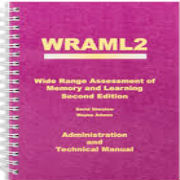 Wide Range Assessment of Memory and Learning-II (WRAML-II): The WRAML-II is a standardized test that measures an individual’s memory functioning by evaluating both immediate and delayed memory ability. It is appropriate for use with individuals ages 5 to 90 years of age. It is composed of two verbal, two visual, and two attention-concentration subtests, which allow the clinician to grasp a better understanding of a client’s verbal, visual, and working memory skills, as well as their attention and concentration capabilities.
Wide Range Assessment of Memory and Learning-II (WRAML-II): The WRAML-II is a standardized test that measures an individual’s memory functioning by evaluating both immediate and delayed memory ability. It is appropriate for use with individuals ages 5 to 90 years of age. It is composed of two verbal, two visual, and two attention-concentration subtests, which allow the clinician to grasp a better understanding of a client’s verbal, visual, and working memory skills, as well as their attention and concentration capabilities.
Wechsler Intelligence Scale For Children (WISC – 5): The WISC- V is a test that measures a child’s general intellectual ability or Full Scale IQ. lr also provides five primary index scores that represent a child’s abilities in cognitive domains. These five primary index scores include: Verbal Comprehension Index, Visual Spatial Index, Fluid Reasoning Index, Working Memory Index, and Processing Speed Index. This test is appropriate for children in between the ages of 6 and 18.
 Wisconsin Card Sorting Test (WCST): The WCST is a neuropsychological test of “set-shifting,” or the ability to display flexibility in the face of changing schedules of reinforcement. The client is presented with a number of stimulus cards, with the shapes on the cards differing in color, quantity, and design. The clinician decides whether the cards are to be matched by color, design, or quantity, and then provides the client with a stack of additional cards and asked to match each one to one of the stimulus cards, forming separate piles for each. The client is not told how to match the cards, but is instructed as to whether each match is right or wrong, with the clinician monitoring the time is takes for the client to learn new rules, while noting mistakes made. This test allows the clinician to assess frontal lobe functions, such as strategic planning, organized searching, and modulating impulsive responding, and is appropriate for children ages 6 years 6 months, and adults up to 89 years of age.
Wisconsin Card Sorting Test (WCST): The WCST is a neuropsychological test of “set-shifting,” or the ability to display flexibility in the face of changing schedules of reinforcement. The client is presented with a number of stimulus cards, with the shapes on the cards differing in color, quantity, and design. The clinician decides whether the cards are to be matched by color, design, or quantity, and then provides the client with a stack of additional cards and asked to match each one to one of the stimulus cards, forming separate piles for each. The client is not told how to match the cards, but is instructed as to whether each match is right or wrong, with the clinician monitoring the time is takes for the client to learn new rules, while noting mistakes made. This test allows the clinician to assess frontal lobe functions, such as strategic planning, organized searching, and modulating impulsive responding, and is appropriate for children ages 6 years 6 months, and adults up to 89 years of age.

Woodcock Johnson III Tests of Achievement (WJ III ACH): The WJ III ACH is a set of academic achievement tests appropriate for administration with children ages 2 and up, all the way through adults (90+). It can be used to determine and describe the present status of an individual’s strengths and weaknesses. It consist of 22 tests, of which the clinician can choose to use all or some of them. The tests tap into areas such as reading, oral language, mathematics, written language, and academic knowledge.
Woodcock Johnson III Tests of Cognitive Abilities (WJ III COG): The WJ III COG is a set of intelligence tests appropriate for administration with children ages 2 and up, all the way through adults (90+). There are 10 subtests in the Standard Battery, and an additional 10 in the Extended Battery, which allows the clinician to obtain detailed analysis of the client’s cognitive abilities. Some of the factors examined in the test include Long-Term Retrieval, Auditory Processing, Fluid Reasoning, and Short-Term Memory.
Young Mania Rating Scale (YMRS): The YMRS is an eleven-item, multiple-choice diagnostic questionnaire which clinicians can use to measure the severity of manic episodes in children and adolescents between the ages of 5 and 17. The 11 items assessed are Elevated Mood, Increased Motor Activity Energy, Sexual Interest, Sleep, Irritability, Speech (Rate and Amount), Language – Thought Disorder, Content, Disruptive – Aggressive Behavior, Appearance and Insight.
Receive online class information and helpful tips from Dr. Randy Kulman's LearningWorks for Kids |








